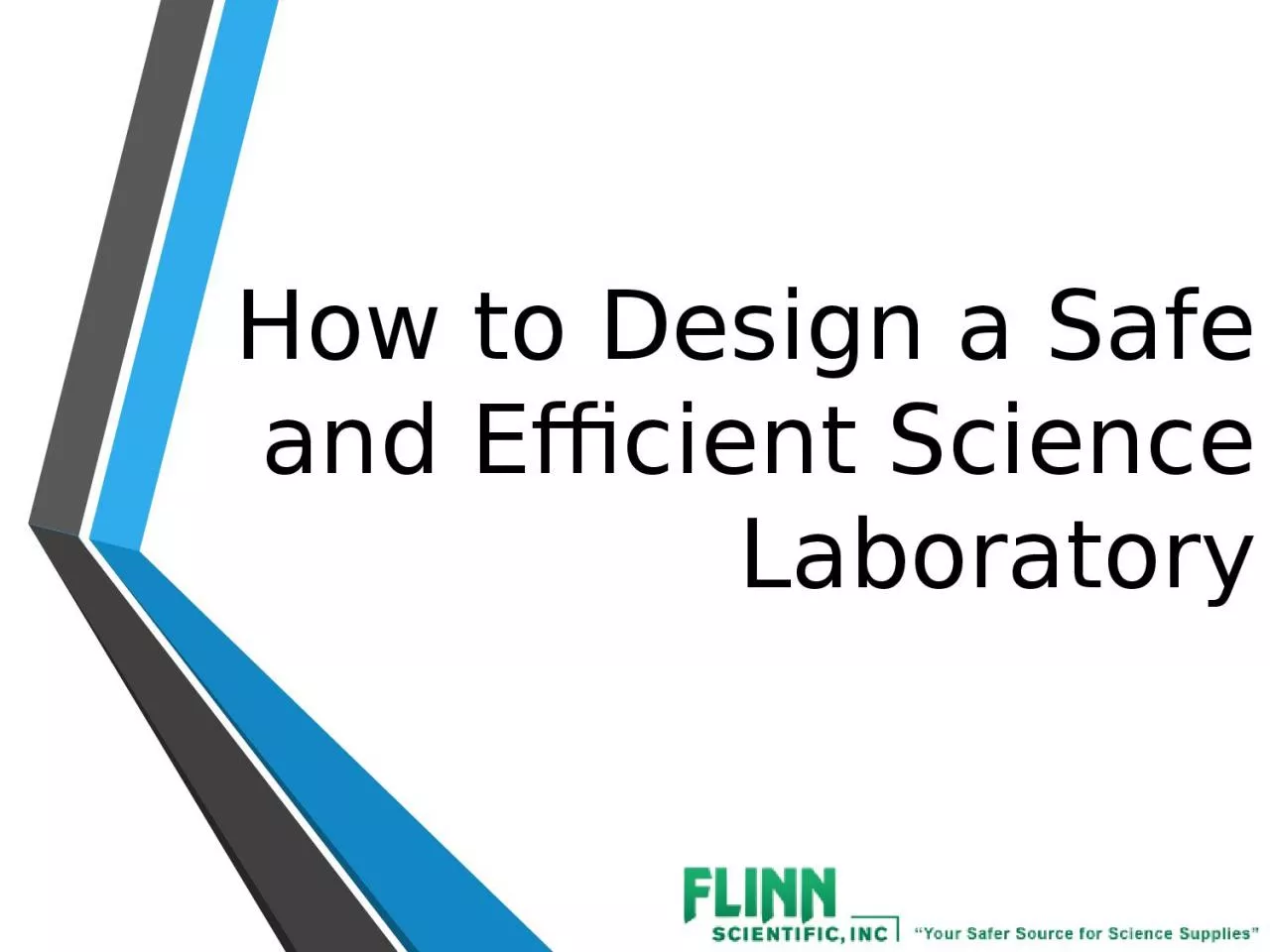

Step 1 Make a List List should include things you like and dislike about your current laboratory Step 2 Set the Room Parameters Laboratory or ClassroomLaboratory Room Size Maximum Class Size ID: 929510
Download Presentation The PPT/PDF document "How to Design a Safe and Efficient Scien..." is the property of its rightful owner. Permission is granted to download and print the materials on this web site for personal, non-commercial use only, and to display it on your personal computer provided you do not modify the materials and that you retain all copyright notices contained in the materials. By downloading content from our website, you accept the terms of this agreement.
Slide1
How to Design a Safe and Efficient Science Laboratory
Slide2Step 1
Make a List
List should include things you like and dislike about your current laboratory.
Slide3Step 2
Set the Room Parameters
Laboratory or Classroom/Laboratory?Room Size?Maximum Class Size?
Single Discipline or Multiple Discipline?
Will Science be the only Class Taught?
What Utilities are Needed?What Safety Equipment is Needed?Handicap Accessibility?
Slide4Step 3
List all the features you would like included in your new laboratory.
Be sure to include all those items you liked about your current lab from.
Build the list as if money was no object.
Think about how science will be taught 20-30 years from now.
Slide5Step 4
Visit Schools
Find out what schools have built new science facilities in your area and arrange a visit.If possible visit schools that have worked with the architect your school is using.
Take pictures!
Talk with teachers using the new laboratories.
Slide6Step 5
Research Laboratory Furniture and Designs
Contact Laboratory Furniture Companies for furnishing and design ideas.
See if any or all of them will work with you to develop a layout of your room.
Slide7Step 6
Develop a List of Priorities
Develop lists for laboratory and storage/preparation areas.Remember different science disciplines (chemistry, biology, physics, STEM) will have different priorities.
Slide8Why are Priorities Important?
Priorities keep focus on what are the important features of the laboratory.
Priorities give direction to architects, builders, and planners.Priorities help with making the tough budget decisions.Priorities help to prevent important items from being left off the plan.
Slide9Flinn Scientific Top Two Laboratory Design Priorities
Ventilation Space Requirements
Slide10Ventilation
Important for the safety of you and your students.Overlooked in the planning phase.
Required by Federal OSHAOSHA 1910.1450OSHA 1910.1450 Appendix AOSHA 1910.106 (d)(4)(iv)
Slide11Ventilation
What you want…In the laboratory: an on-demand system that provides a minimum of six air changes per hour (ACH).
In the storage room: 24/7/365 system that provides a minimum of six air changes per hour (ACH).
Slide12Space Requirements
An optimal educational science laboratory should provide:
45 sq. ft. – 50 sq. ft. per student for a dedicated laboratory room or middle school.60 sq. ft. per student for a dedicated combination classroom/laboratory room.Clear routes of travel.
Good sight line for supervision.
Slide13Layouts to
Avoid
Slide14Divided Classroom/Laboratory
Slide15Blended Classroom/Laboratory
Slide16Laboratory Only: Perimeter Pier
Slide17Laboratory Only: Forward View
Slide18Middle School/Physics
Classroom Layout
Slide19Middle School/Physics
Laboratory Layout
Slide20Where to Start?
Take Control!
With UDesign™ you can:
Compare a variety of lab designs and options.
Participate in creating a customized learning environment.
Communicate your ideas to administrators and architects.
www.flinnsci.com/udesign